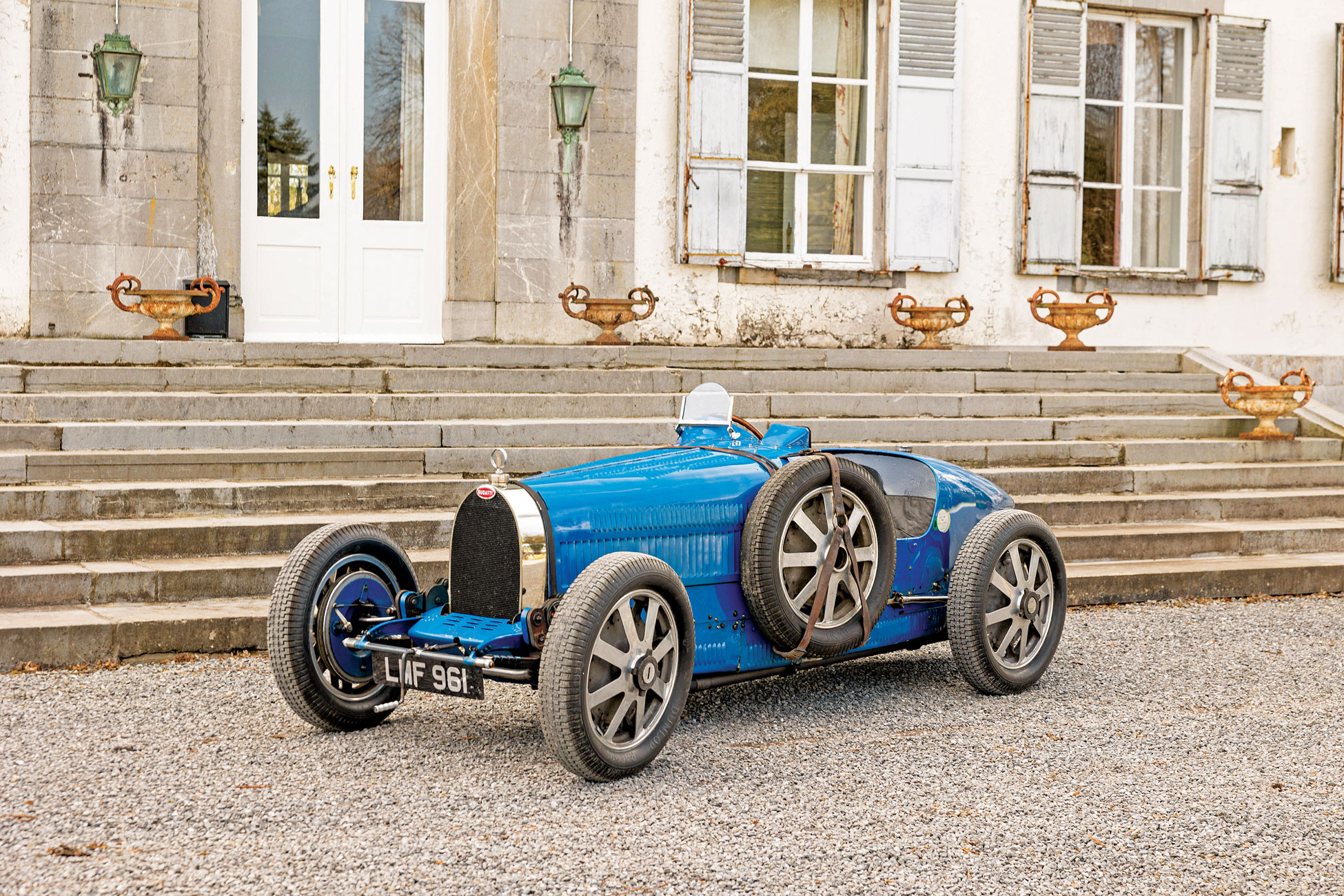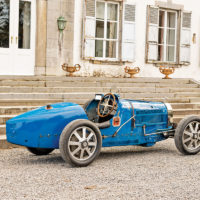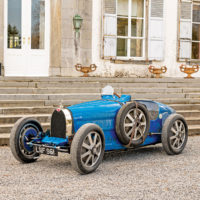SCM Analysis
Detailing
| Vehicle: | 1927 Bugatti Type 35B |
| Years Produced: | 1927–31 |
| Number Produced: | About 40 T35B out of a total production of 300 in all T35 derivatives |
| SCM Valuation: | $5,216,500 |
| Tune Up Cost: | $1,500 |
| Chassis Number Location: | $1,500 |
| Engine Number Location: | Stamped on rear left engine leg |
| Club Info: | American Bugatti Club |
| Website: | http://www.americanbugatticlub.org |
| Alternatives: | 1927–29 Maserati 26B, 1924–30 Alfa Romeo P2, 1926–30 Talbot 8C 1500 |
| Investment Grade: | B |
This car, Lot 118, sold for $2,077,000 (€2,000,000), including buyer’s premium, at Bonhams’ Monaco sale on May 13, 2022.
In the ’20s, the Bugatti 35 Grand Prix car was the one to beat. Although automotive technology was advancing at a rapid rate, for five long years, it was extremely successful. Today, the iconic body with the horseshoe radiator remains instantly recognizable to collectors of any generation.
The straight-8 engine featured a roller-bearing crank and came in a number of configurations: 2.0 or 2.3 liters, with or without a supercharger. These choices were horses for courses, with the two blown versions (35C for the 2.0 and 35B for the 2.3) producing little difference in horsepower but making the power in different ways. The 2.0 was freer-revving, while the 2.3 offered more torque. A rare option was 2.3 sans supercharger. Carrying the 35T moniker, it was better suited to endurance races such as the Targa Florio. These little cars were easy to drive, agile, and shot to a top speed of 125 mph.
A long read
In the catalog description for our subject car (what is printed above is heavily excerpted), French Bugatti historian Pierre-Yves Laugier made a painstaking report. He details the car’s history for the whole of its nearly 100-year existence. But Laugier, in his inimitable style, goes off on tangents, so reading the report is a complicated chore, even to the initiated.
To summarize: The first owner originally ordered a 35T with the intention of using it as a road car but changed his mind before delivery. He wanted a supercharged version. The original order was changed, and he received chassis number 4888, a 35B, delivered directly to his home country of Holland.
In the ’30s, for an unspecified reason, the lower crankcase was changed by the factory for an early type 51 (twin-cam) pan. The engine number is stamped on the crankcase, wrongly giving the impression that the car did not have its original engine. But the main part of the engine remained original to the chassis, borne out by the original stampings on all other major components.
The car was purchased by an English dealer in 1938. From then on, it was used at a number of club races in the U.K. It was probably at this time that the car was fitted with wire wheels. The original wheels would have been aluminum, but wider wires allowed wider tires. The car passed through a number of owners in the U.K. before being sold to the consignor in 1975. It was likely at this time that the car was converted back to aluminum wheels.
Pleasure of ownership
Values for Bugatti Grand Prix cars have generally bucked the downward trend for pre-war cars. This is surprising, as there are a huge number of bitsas and extremely good tool-room replicas, which generally pull down the value of the real thing. Vintage races are often padded out with replicas, which doesn’t help. If you just want to go racing, why pay 10 times more for a genuine car? The answer, of course, is history. In the art world, paintings and sculptures that are extremely good fakes can give the same visual pleasure as the original — but not the same pleasure of ownership.
Our subject car was delivered to the first owner as a road car. It was almost certainly equipped with a generator, lights and fenders. None of these items are now present on the car, certainly removed during its post-war club-racing era. The original bracket and pulley for the generator are still in place, but the absence of the generator caused some confusion with potential buyers.
There was also an assumption that the body was not original. The fuel tank and filler opening were placed farther back than normal. But close inspection revealed that the original filler hole had metal welded into the original body to enable the fuel-tank relocation. It was moved presumably to afford more storage behind the easily removable seat back. Post-war photos of the car with wire wheels also led buyers to assume that this was possibly a far-less-expensive and -desirable lower-spec 35A, which is not the case.
Questionable concerns
There are only a handful of totally original supercharged Type 35 Bugattis left in existence. They rarely change hands, and when they do, they do so discreetly — and for twice the $2m sale price here. Our subject car had some disputable problems, but in reality, except for the crankcase, they were red herrings (and even that had been changed at the factory, in-period). The car is close to being perfect. Similar cars, albeit with more significant race history, have consistently sold for over $4m at auction, and more has been achieved privately.
After 4888 failed on the podium, a deal for the car was immediately brokered. So why was it so cheap? The degree of originality in these cars significantly affects value. The unfounded doubt over the bodywork and the non-original crankcase will have been significant factors for a potential buyer. Laugier’s long and complicated report had the effect of obfuscating the relevant facts. The car will now be going back to the U.K., to a new owner who got a cracking deal. ♦
(Introductory description courtesy of Bonhams.)




